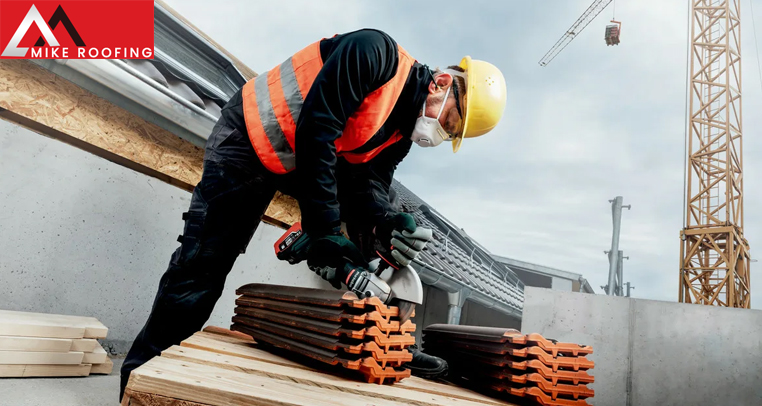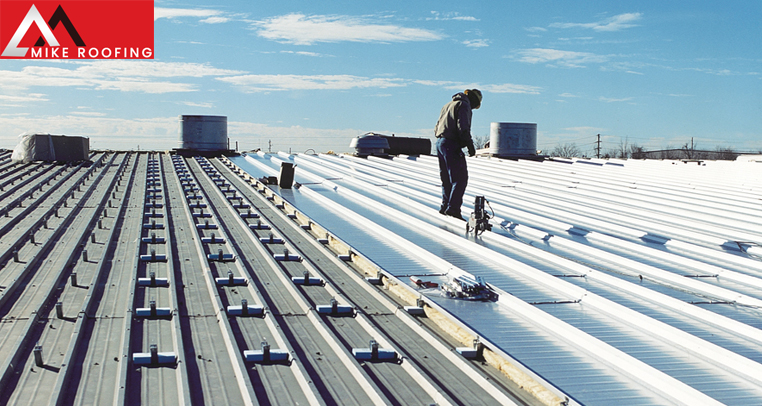Navigating Roofing Regulations: Key Considerations for Compliance in 2024
As we progress into 2024, the roofing industry continues to evolve, driven by technological advancements, environmental concerns, and changing regulatory landscapes. Roofing regulations play a crucial role in ensuring the safety, durability, and efficiency of building structures while also addressing broader societal goals such as sustainability and energy conservation. For property owners, builders, and roofing professionals, staying abreast of these regulations is not just a matter of legal compliance but also a pathway to creating better, more resilient buildings.The year 2024 brings with it a host of updated and new regulations that reflect the industry’s response to climate change, urbanization, and the push for more sustainable construction practices. These regulations encompass a wide range of areas, from material standards and installation practices to energy efficiency requirements and worker safety protocols. Understanding and adhering to these regulations is essential for anyone involved in roofing projects, whether it’s a new installation, a major renovation, or routine maintenance. This comprehensive guide aims to navigate the complex world of roofing regulations, highlighting key considerations for compliance in 2024 and beyond.

Energy Efficiency and Sustainability Regulations
Solar-Ready Roof Requirements
In 2024, many jurisdictions have implemented or expanded regulations requiring new buildings to have “solar-ready” roofs. These regulations aim to facilitate the future installation of solar panels, even if they are not immediately installed during construction.
Key aspects of solar-ready roof regulations include:
- Minimum structural capacity to support solar panel systems
- Dedicated roof space for potential solar installations
- Pre-installed conduit for easier electrical connection
- Proper roof orientation and pitch considerations
Building designers and roofing professionals must incorporate these elements into their plans to ensure compliance and future-proof buildings for renewable energy adoption.
Cool Roofing Standards
Cool roofing standards have become more stringent in 2024, reflecting the urgent need to combat urban heat island effects and reduce building energy consumption.
Updated cool roofing regulations typically include:
- Higher minimum Solar Reflectance Index (SRI) values for roofing materials
- Expanded cool roofing requirements for commercial and residential buildings
- Incentives for exceeding minimum cool roofing standards
- Regular maintenance and cleaning requirements to maintain reflective properties
Roofing material manufacturers and installers need to ensure their products and practices align with these enhanced cool roofing standards to meet regulatory compliance.
Green Roof Incentives and Requirements
Green roofs, once considered a niche option, have gained significant traction in urban areas. In 2024, many cities have introduced regulations that either require or strongly incentivize green roof installations on certain types of buildings.
Green roof regulations often address:
- Minimum coverage requirements for new commercial buildings
- Structural load capacity standards for green roof systems
- Waterproofing and drainage specifications
- Plant selection and maintenance guidelines
- Integration with stormwater management systems
Compliance with green roof regulations requires collaboration between roofing professionals, landscape architects, and structural engineers to ensure safe and effective implementation.
Safety and Durability Standards
Enhanced Wind Resistance Requirements
In response to increasingly severe weather events, 2024 has seen a tightening of wind resistance standards for roofing systems across many regions.
Updated wind resistance regulations typically include:
- Higher minimum wind uplift resistance ratings for roofing materials
- More rigorous testing and certification processes for roofing systems
- Specific installation guidelines for high-wind zones
- Regular inspection requirements to ensure ongoing compliance
Roofing professionals must stay informed about these enhanced standards and adjust their material selections and installation practices accordingly.
Fire Safety Regulations
Fire safety remains a critical concern, with updated regulations in 2024 focusing on improving the fire resistance of roofing materials and systems.
Key aspects of fire safety regulations include:
- Stricter fire rating requirements for roofing materials in wildfire-prone areas
- Enhanced testing standards for fire resistance and spread
- Regulations on the use of fire-retardant treatments for wooden roofing components
- Requirements for fire-resistant underlayments and barrier systems
Compliance with these regulations is crucial for ensuring building safety and may require updates to traditional roofing practices and material choices.
Impact Resistance Standards
With the increasing frequency of severe weather events, including hailstorms, impact resistance standards for roofing materials have become more stringent in 2024.
Updated impact resistance regulations often include:
- Higher minimum impact resistance ratings for roofing materials in hail-prone regions
- Expanded testing protocols to simulate real-world impact scenarios
- Requirements for impact-resistant skylights and roof accessories
- Incentives for exceeding minimum impact resistance standards
Roofing material manufacturers and installers must ensure their products meet these enhanced standards to maintain compliance and provide adequate protection for buildings.

Environmental and Health Regulations
VOC Emission Limits
Volatile Organic Compound (VOC) emissions from roofing materials and adhesives have come under increased scrutiny in 2024, with stricter limits imposed to protect air quality and human health.
New VOC regulations typically address:
- Lower maximum VOC content for roofing adhesives and sealants
- Expanded regulation of VOC emissions from roofing membranes and coatings
- Requirements for proper ventilation during and after roofing installations
- Mandatory use of low-VOC or VOC-free alternatives in sensitive environments
Roofing professionals need to be aware of these regulations and adjust their material choices and installation practices to ensure compliance and protect worker and occupant health.
Asbestos and Lead Abatement Regulations
While not new, regulations surrounding the handling and disposal of asbestos and lead-containing roofing materials have been updated in 2024 to reflect current best practices and health standards.
Key aspects of these regulations include:
- Stricter testing requirements for potential asbestos and lead-containing materials
- Enhanced safety protocols for removal and handling of hazardous materials
- More comprehensive documentation and reporting requirements
- Expanded training and certification programs for abatement professionals
Compliance with these regulations is critical for protecting worker health and ensuring proper handling of potentially dangerous materials during roofing renovations and demolitions.
Stormwater Management Integration
In 2024, many jurisdictions have implemented regulations that require roofing systems to play a more active role in stormwater management, particularly in urban areas prone to flooding.
Stormwater management regulations for roofing often include:
- Requirements for rainwater harvesting systems on certain building types
- Integration of blue roof systems for temporary water storage
- Specifications for green roof systems that aid in stormwater retention
- Standards for roof drainage systems to manage water flow effectively
Roofing professionals must collaborate with civil engineers and landscape architects to ensure roofing designs comply with these integrated stormwater management regulations.
Installation and Maintenance Regulations
Worker Safety Standards
Worker safety regulations for roofing have been further enhanced in 2024, reflecting ongoing efforts to reduce accidents and improve working conditions in the industry.
Updated worker safety regulations typically include:
- Stricter fall protection requirements, including expanded use of safety nets and guardrails
- Enhanced training and certification requirements for roofing professionals
- Regulations on working hours and conditions, particularly in extreme weather
- Improved standards for equipment maintenance and inspection
Compliance with these regulations is essential not only for legal reasons but also for ensuring the well-being of roofing professionals and reducing industry-wide accident rates.
Quality Control and Inspection Protocols
To ensure the long-term performance and safety of roofing systems, many jurisdictions have implemented more rigorous quality control and inspection regulations in 2024.
Key aspects of these regulations include:
- Mandatory third-party inspections at critical stages of roofing installations
- Implementation of digital documentation and reporting systems for inspections
- Regular recertification requirements for roofing systems, especially in high-risk areas
- Enhanced training and licensing requirements for roofing inspectors
Roofing professionals must integrate these enhanced quality control measures into their project timelines and budgets to ensure compliance and deliver high-quality roofing systems.
Recycling and Waste Management Requirements
In line with broader sustainability goals, 2024 has seen the introduction of more stringent regulations regarding the recycling and proper disposal of roofing materials.
New recycling and waste management regulations often address:
- Mandatory recycling percentages for certain roofing materials (e.g., asphalt shingles, metal roofing)
- Requirements for on-site sorting of roofing waste materials
- Documentation of proper disposal or recycling of roofing debris
- Incentives for using recycled or recyclable roofing materials
Compliance with these regulations requires roofing professionals to establish partnerships with recycling facilities and implement proper waste management practices on job sites.

Technology and Documentation Regulations
Building Information Modeling (BIM) Requirements
As digital technologies continue to transform the construction industry, many jurisdictions have introduced regulations in 2024 that require the use of Building Information Modeling (BIM) for roofing projects, especially on larger or public buildings.
BIM regulations for roofing typically include:
- Mandatory use of BIM for design and documentation of roofing systems
- Standards for BIM model detail and information inclusion
- Requirements for BIM-based clash detection and resolution
- Integration of BIM models with facility management systems for long-term maintenance
Roofing professionals must invest in BIM technologies and training to ensure compliance with these digital documentation requirements.
Drone Usage and Aerial Inspection Standards
The use of drones for roof inspections and surveys has become increasingly common, leading to the introduction of specific regulations governing their use in the roofing industry in 2024.
Drone usage regulations often include:
- Licensing and certification requirements for drone operators in the roofing industry
- Standards for drone-based roof inspection methodologies
- Privacy and security considerations for aerial roof surveys
- Integration of drone-collected data with other building documentation systems
Compliance with these regulations requires roofing professionals to develop new skills and invest in drone technologies to enhance their inspection and documentation capabilities.
Energy Performance Documentation
In 2024, many jurisdictions have expanded regulations requiring detailed documentation of a roof’s energy performance as part of the overall building energy assessment.
Energy performance documentation regulations typically include:
- Mandatory energy modeling of roofing systems, including insulation and reflective properties
- Requirements for real-time energy performance monitoring of roofing systems
- Integration of roofing energy data with whole-building energy management systems
- Regular reporting and verification of roofing system energy performance
Roofing professionals must collaborate with energy consultants and integrate energy performance considerations into their design and installation processes to meet these documentation requirements.
Conclusion
Navigating the complex landscape of roofing regulations in 2024 requires a proactive approach and a commitment to ongoing education and adaptation. The regulations discussed here reflect the industry’s response to pressing challenges such as climate change, sustainability, and worker safety, as well as the opportunities presented by technological advancements. Compliance with these regulations not only ensures legal adherence but also contributes to the creation of safer, more efficient, and more sustainable buildings. As the regulatory environment continues to evolve, roofing professionals, property owners, and other stakeholders must stay informed and agile, ready to incorporate new standards and best practices into their work. By embracing these regulations and the principles behind them, the roofing industry can play a crucial role in shaping a more resilient and sustainable built environment for the future.


